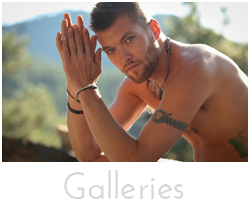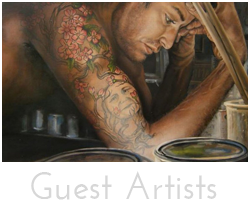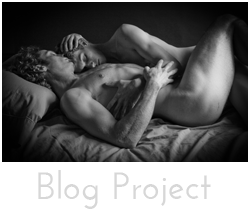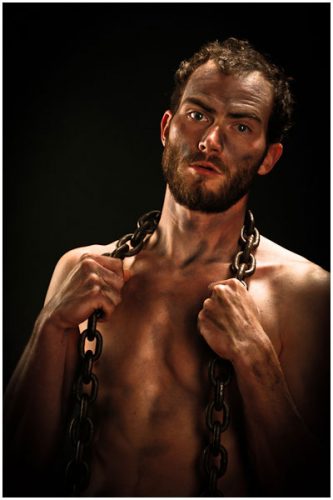 Yesterday I began a discussion about analyzing light in a photograph to use it to your advantage. The discussion began with my looking at a book of rare vintage nudes from the 60’s. And there was a prime example of what I wanted to talk about in one of the images but I can find a decent enough image of it online to show my examples so I am going to take this image of Travis. It’s harder to do on an image that I already know and have created. To me my own lighting techniques are so simplistic that they are hard to describe but here goes. My concept for the image was to show a gritty dirty mechanic sort of guy who had been working in a shop possibly most of his life. Growing up in small towns in Montana there are guys I know well and in high school I was particularly drawn to one kid who really exited me. He was a smart kid from a poorer family and work to help supplement and support his family. I watched him struggle most of the time and often worked instead of having fun with some of the rest of us his own age. He had an alliance to duty and I felt he often felt trapped in that world longing to be out from under its burden. He always seemed to live in a very fractured world. Yet there was something sexy and sensual in his honesty and how humble his work in the garage became. Every time I would visit he would just dirty in his coveralls, grime smeared across his face. The smell of the grease and mechanic dirt somehow become intoxicating to me and I found a strong desire to somehow be closer to him and somehow ease his fractured world.
Yesterday I began a discussion about analyzing light in a photograph to use it to your advantage. The discussion began with my looking at a book of rare vintage nudes from the 60’s. And there was a prime example of what I wanted to talk about in one of the images but I can find a decent enough image of it online to show my examples so I am going to take this image of Travis. It’s harder to do on an image that I already know and have created. To me my own lighting techniques are so simplistic that they are hard to describe but here goes. My concept for the image was to show a gritty dirty mechanic sort of guy who had been working in a shop possibly most of his life. Growing up in small towns in Montana there are guys I know well and in high school I was particularly drawn to one kid who really exited me. He was a smart kid from a poorer family and work to help supplement and support his family. I watched him struggle most of the time and often worked instead of having fun with some of the rest of us his own age. He had an alliance to duty and I felt he often felt trapped in that world longing to be out from under its burden. He always seemed to live in a very fractured world. Yet there was something sexy and sensual in his honesty and how humble his work in the garage became. Every time I would visit he would just dirty in his coveralls, grime smeared across his face. The smell of the grease and mechanic dirt somehow become intoxicating to me and I found a strong desire to somehow be closer to him and somehow ease his fractured world.
 I used Travis as me subject for this study because he so much reminded me of the person I used to know. So now that you know the history of the image I want you to begin looking that the image and analyze to see if I have indeed captured the properties of my intent tough the use of light. Typically I do this with images I don’t know the story behind and try to discover the artist’s connection to the subject though their use of light and exposure. The first thing I look at is the overall feel of the image. What does it stir or evoke within myself? There is a distance yet longing with in his eyes and a power and a strength in his hands that embrace the chain the bind him around his neck with a sort of comfort while he stands back, distant, yet there is a longing in his bloodshot eyes to connect to something different. Once you have established the over all mood, you must search the image for what supports that feeling. How does the light impact the psychology of the image? How many lights did the photographer use and where were they placed. The first place to begin to look for how a photographer uses light is to look at the catch light in the subject’s eyes. If you can zoom in close it will give you a lot of detail what the shape of the light was and where it was placed. On Travis you will see I used two lights in the front one a very long narrow light with a soft filter almost straight out in front, slightly to the right. You will also see just a faint small secondary light to the left that fills in the shadows on the left side of his face. This is what captures the longing in his eyes. I then used two very strong lights one to the left, not very high to sculpt the right side and a secondary light with little filter over his left shoulder. These are slightly behind him because I wanted there to be shadows on his face that represented and fractured light coming from different angels across his face, enhancing him being pulled in different directions accentuation his own fractured world. To discover the placement of these lights you look at where the highlights hit and the shadows fall. You see dappled patches of highlights across his face that mirrors the dappled grime on his face. Look at how the shadows fall on the veins of his hands and try to visualize where the light would need to be outside of the image to create such an effect. Then the image is slightly underexposed to give it a pervasive darkness that was really the mood I remember about this kid.
I used Travis as me subject for this study because he so much reminded me of the person I used to know. So now that you know the history of the image I want you to begin looking that the image and analyze to see if I have indeed captured the properties of my intent tough the use of light. Typically I do this with images I don’t know the story behind and try to discover the artist’s connection to the subject though their use of light and exposure. The first thing I look at is the overall feel of the image. What does it stir or evoke within myself? There is a distance yet longing with in his eyes and a power and a strength in his hands that embrace the chain the bind him around his neck with a sort of comfort while he stands back, distant, yet there is a longing in his bloodshot eyes to connect to something different. Once you have established the over all mood, you must search the image for what supports that feeling. How does the light impact the psychology of the image? How many lights did the photographer use and where were they placed. The first place to begin to look for how a photographer uses light is to look at the catch light in the subject’s eyes. If you can zoom in close it will give you a lot of detail what the shape of the light was and where it was placed. On Travis you will see I used two lights in the front one a very long narrow light with a soft filter almost straight out in front, slightly to the right. You will also see just a faint small secondary light to the left that fills in the shadows on the left side of his face. This is what captures the longing in his eyes. I then used two very strong lights one to the left, not very high to sculpt the right side and a secondary light with little filter over his left shoulder. These are slightly behind him because I wanted there to be shadows on his face that represented and fractured light coming from different angels across his face, enhancing him being pulled in different directions accentuation his own fractured world. To discover the placement of these lights you look at where the highlights hit and the shadows fall. You see dappled patches of highlights across his face that mirrors the dappled grime on his face. Look at how the shadows fall on the veins of his hands and try to visualize where the light would need to be outside of the image to create such an effect. Then the image is slightly underexposed to give it a pervasive darkness that was really the mood I remember about this kid.
I can spend hours and hours looking at photographs trying to analyze the intensity of their felling. I think many photographers once they learn the tools of their craft subliminally allow those powerful tools to work for them. We don’t really have the time to necessarily analyze the image as we are taking them, but all we have ever learned just instinctively comes into play.
Though my thoughts of this boy go back to when we were both 16, nothing developed between us, just a remarkable friendship, but I still remember that longing to become a part of his world; to somehow linger beside him. He ended up marring my best friend and entered a world of greater joy that I had never seen within him before. He finally seemed content. Years later I heard of his passing, probable suicide, and a sickness filled the pit of my stomach. I know I have become a success with this image, when I gaze deep into Travis’ eyes and am haunted by the memory of our faded youth.

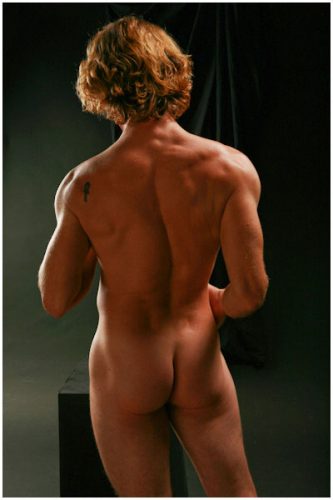 I have recently been working through the Reed Massengill book Uncovered: Rare Vintage Male Nudes and am struck by the remarkable beauty of the images, not so much the models that are paraded though out the book, but by the photographer’s skills in crafting the images. One particular photographer from the 60’s, I think who had an exceptional eye, was Al Urban, a photographer I had never even heard about. He used stark backgrounds and you can tell from the images spent quite a lot of time working with the light to create a perfect balance. As a photographer and I suppose particularly as a lighting designer, I learned early to pay close attention to light, the source, the color, the quality. Photography is a process that I think really can’t be taught. Sure, you need to learn the basic skills of how the camera functions and when you yourself have absolute control of the tool, but the remainder of what you need to know is, how do I relate to this subject and that is developed through your power of observation. The best way to learn your craft is to study the masters who have crafted images before you. I used to love fashion magazines, not for the stories, but for the remarkable lighting in the images the photographers created to sell the products. My ideal Sunday would be to buy a stack of magazines and slowly go through them page by page ripping out all the images that excited me in any way. Sometimes it’s a look in one, sometimes it’s a line in another, a makeup technique, a piece of clothing, an exposed neck. Every image had a quality that I adored. I would scatter these images across the floor and study them for hours or even days. Soon I began to understand the dynamic of what made a specific image so alluring. Soon a set of skills begins to develop that helps us to evaluate the image. Since I am so drawn to light, that is the first thing I began to explore in the image. Then I take the concept from the original inspiration, bring it into my studio and begin to explore the properties of lighting within the images. I began with hot lights because I was fascinated with the old Hollywood glamour lighting styles and knew I could maintain absolute control and could actually see the results. Then each month I added another piece of equipment that would do something else until eventually I had strobes and eventually designing my studio to channel the natural light into in certain ways. Everyone that walks into my studio seems mesmerized by the remarkable structure of light of the building. This all begins with understanding the photograph and is fed by an impulse. It’s funny as I write this the morning sun is coming over the hill and the room took on an extraordinary glow, since the trees are barren and can no longer filter on the east side of the house. I now wish I had someone naked standing before me to use this beautiful radiance as an example. And in this moment I feel in tune with the universe and as it gives this extraordinary moment just as I write about it. I digress, today’s topic was going to the about viewing a photograph for the lighting properties, but suddenly the preface on light seems to have taken up the entire blog. Tomorrow I will talk about how to evaluate images to extract their lighting values.
I have recently been working through the Reed Massengill book Uncovered: Rare Vintage Male Nudes and am struck by the remarkable beauty of the images, not so much the models that are paraded though out the book, but by the photographer’s skills in crafting the images. One particular photographer from the 60’s, I think who had an exceptional eye, was Al Urban, a photographer I had never even heard about. He used stark backgrounds and you can tell from the images spent quite a lot of time working with the light to create a perfect balance. As a photographer and I suppose particularly as a lighting designer, I learned early to pay close attention to light, the source, the color, the quality. Photography is a process that I think really can’t be taught. Sure, you need to learn the basic skills of how the camera functions and when you yourself have absolute control of the tool, but the remainder of what you need to know is, how do I relate to this subject and that is developed through your power of observation. The best way to learn your craft is to study the masters who have crafted images before you. I used to love fashion magazines, not for the stories, but for the remarkable lighting in the images the photographers created to sell the products. My ideal Sunday would be to buy a stack of magazines and slowly go through them page by page ripping out all the images that excited me in any way. Sometimes it’s a look in one, sometimes it’s a line in another, a makeup technique, a piece of clothing, an exposed neck. Every image had a quality that I adored. I would scatter these images across the floor and study them for hours or even days. Soon I began to understand the dynamic of what made a specific image so alluring. Soon a set of skills begins to develop that helps us to evaluate the image. Since I am so drawn to light, that is the first thing I began to explore in the image. Then I take the concept from the original inspiration, bring it into my studio and begin to explore the properties of lighting within the images. I began with hot lights because I was fascinated with the old Hollywood glamour lighting styles and knew I could maintain absolute control and could actually see the results. Then each month I added another piece of equipment that would do something else until eventually I had strobes and eventually designing my studio to channel the natural light into in certain ways. Everyone that walks into my studio seems mesmerized by the remarkable structure of light of the building. This all begins with understanding the photograph and is fed by an impulse. It’s funny as I write this the morning sun is coming over the hill and the room took on an extraordinary glow, since the trees are barren and can no longer filter on the east side of the house. I now wish I had someone naked standing before me to use this beautiful radiance as an example. And in this moment I feel in tune with the universe and as it gives this extraordinary moment just as I write about it. I digress, today’s topic was going to the about viewing a photograph for the lighting properties, but suddenly the preface on light seems to have taken up the entire blog. Tomorrow I will talk about how to evaluate images to extract their lighting values.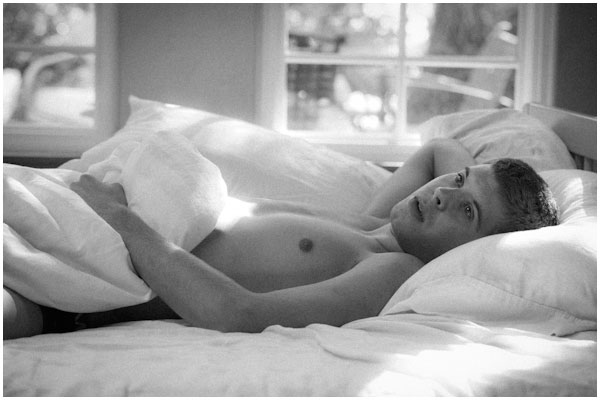 Most of yesterday was spent cleaning out the garden. It’s the final winterizing of the plants for the season. I put my headphones on and listened to a couple of my favorite musicals and began to pull the annuals, cut perennials, and mound roots of things that need protection. This will be my last garden post for the season. The garden becomes my place of reflection and I typically delve deeper into my emotions and feelings when I am surrounded by its grace. I have not always loved gardening, as a kid on the ranch we had an acre that was mostly vegetables and potatoes and it seemed more of a chore to maintain. In those days we completely lived off the land, canned or stored everything in a root cellar to last until the next harvest. We raised and butchered our own cattle and all the men in my family, except me were hunters always filling the freezers with meat. The ranch was sustained by a natural water spring about a mile up the mountain that we piped down the homestead. Life seemed so simple then. But as a kid I think life always seems simple no matter where you grow up. Yesterday, as I cleaned the garden, I began to realize how connected I have always been with the land around me, just as my father, grandfather, and great grandfather who homesteaded the land were connected. I once had a friend in Dallas who talked about how the people from Montana have a certain look in their eyes that was recognizable, that was different from everyone else. I hadn’t paid much attention to it at the time, but have thought about it a lot since then. Becoming a photographer and creating portraits you become keenly aware of other peoples focus. What I began to realize, that look my friend was talking about was the openness of one´s eyes to see beyond ourselves. In Montana we grow up with our vision focused on the beautiful landscape that surrounds us, the mountains always become a point of focus in the distance. Whereas, when I go to a city like New York, the focus becomes narrow, downward, avoiding, protecting our personal space. In Montana we perceive the entire world is our personal space. This focus changes depending on whatever environment which you are raised. For me working in the earth grounds me and brings me back to center. I have been focused for so long on something so narrow, upfront, personal and close to my heart, that I almost feel like I forget to breathe. But working in the garden gives me perspective of where I have been as I am flooded with all my memories from all my previous seasons of the garden. The garden holds our sense memory within our bodies as often as repeating a task stirs a reoccurrence of a thought associated with that task from before. Several years ago I was diagnosed with cancer and underwent a summer of chemotherapy, though I didn’t have the energy that summer to garden much, I did make it out every day. I was the only way I survived that summer from hell. It is the place where I dare to dream in the solitude of my own head. As a kid I loved digging the mounds of potatoes in the cool fall, there was something satisfying about pulling from that dirty earth something that would sustain you for a year. So the Fall seasons for me, though they represent the earth becoming dormant, signify the bounty of sustainability for a new year. I realize I am a man of many opposites and perhaps this is what I love so much about the process of a garden. Granted, I no longer work the earth to sustain myself and buy most of my produce in the supermarkets, but the idealism of this life is still there and lives within my own hands. At least with the land I know where I stand and to which I will eventually be returned. My thoughts this Fall were on my accomplishments this year and how much I have grown and changed as I realize this has been my greatest year of self-acceptance.
Most of yesterday was spent cleaning out the garden. It’s the final winterizing of the plants for the season. I put my headphones on and listened to a couple of my favorite musicals and began to pull the annuals, cut perennials, and mound roots of things that need protection. This will be my last garden post for the season. The garden becomes my place of reflection and I typically delve deeper into my emotions and feelings when I am surrounded by its grace. I have not always loved gardening, as a kid on the ranch we had an acre that was mostly vegetables and potatoes and it seemed more of a chore to maintain. In those days we completely lived off the land, canned or stored everything in a root cellar to last until the next harvest. We raised and butchered our own cattle and all the men in my family, except me were hunters always filling the freezers with meat. The ranch was sustained by a natural water spring about a mile up the mountain that we piped down the homestead. Life seemed so simple then. But as a kid I think life always seems simple no matter where you grow up. Yesterday, as I cleaned the garden, I began to realize how connected I have always been with the land around me, just as my father, grandfather, and great grandfather who homesteaded the land were connected. I once had a friend in Dallas who talked about how the people from Montana have a certain look in their eyes that was recognizable, that was different from everyone else. I hadn’t paid much attention to it at the time, but have thought about it a lot since then. Becoming a photographer and creating portraits you become keenly aware of other peoples focus. What I began to realize, that look my friend was talking about was the openness of one´s eyes to see beyond ourselves. In Montana we grow up with our vision focused on the beautiful landscape that surrounds us, the mountains always become a point of focus in the distance. Whereas, when I go to a city like New York, the focus becomes narrow, downward, avoiding, protecting our personal space. In Montana we perceive the entire world is our personal space. This focus changes depending on whatever environment which you are raised. For me working in the earth grounds me and brings me back to center. I have been focused for so long on something so narrow, upfront, personal and close to my heart, that I almost feel like I forget to breathe. But working in the garden gives me perspective of where I have been as I am flooded with all my memories from all my previous seasons of the garden. The garden holds our sense memory within our bodies as often as repeating a task stirs a reoccurrence of a thought associated with that task from before. Several years ago I was diagnosed with cancer and underwent a summer of chemotherapy, though I didn’t have the energy that summer to garden much, I did make it out every day. I was the only way I survived that summer from hell. It is the place where I dare to dream in the solitude of my own head. As a kid I loved digging the mounds of potatoes in the cool fall, there was something satisfying about pulling from that dirty earth something that would sustain you for a year. So the Fall seasons for me, though they represent the earth becoming dormant, signify the bounty of sustainability for a new year. I realize I am a man of many opposites and perhaps this is what I love so much about the process of a garden. Granted, I no longer work the earth to sustain myself and buy most of my produce in the supermarkets, but the idealism of this life is still there and lives within my own hands. At least with the land I know where I stand and to which I will eventually be returned. My thoughts this Fall were on my accomplishments this year and how much I have grown and changed as I realize this has been my greatest year of self-acceptance.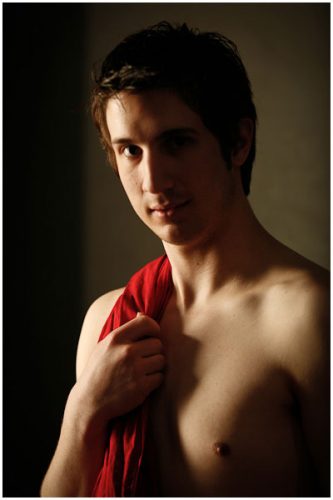 It has been about two and a half months since I returned from my inspirational trip to France and Germany and have since accomplished the goal I set out to do. This morning I have began reconnecting to some of my Man Art and Red Bubble friends and approaching them on the possibility of building a gallery of their magnificent works that could become featured artist on the new site. It feels that I have been in a creative hole since my return from the trip that I have lost touch with all my creative artist friends that are also exploring the nude male form. Hopefully you will begin to see new galleries of their work begin to populate the new website and it will finally begin to grow. Not that I don’t have enough work of my own to do because I still have 32 of my own galleries that we have created, but not had the time to put up yet. The site will continue to grow in the upcoming weeks. I am still trying to figure out some of it operational features and placement and links to the home page. And, I have been trying to take some time off and get caught up with my own life. But perhaps, this is my life. Not a bad life at that if so. The gardens are about to bed for the winter and this seems like an excellent way to spend my winter, stuck indoors working on this vision. Today I have to say thanks to Franz Werner in Berlin, who is one of the most inspirational people who have given me the idea for making this project happen. I have never seen a man so passionate and dedicating so much of his life to showing the modern male erotic form.
It has been about two and a half months since I returned from my inspirational trip to France and Germany and have since accomplished the goal I set out to do. This morning I have began reconnecting to some of my Man Art and Red Bubble friends and approaching them on the possibility of building a gallery of their magnificent works that could become featured artist on the new site. It feels that I have been in a creative hole since my return from the trip that I have lost touch with all my creative artist friends that are also exploring the nude male form. Hopefully you will begin to see new galleries of their work begin to populate the new website and it will finally begin to grow. Not that I don’t have enough work of my own to do because I still have 32 of my own galleries that we have created, but not had the time to put up yet. The site will continue to grow in the upcoming weeks. I am still trying to figure out some of it operational features and placement and links to the home page. And, I have been trying to take some time off and get caught up with my own life. But perhaps, this is my life. Not a bad life at that if so. The gardens are about to bed for the winter and this seems like an excellent way to spend my winter, stuck indoors working on this vision. Today I have to say thanks to Franz Werner in Berlin, who is one of the most inspirational people who have given me the idea for making this project happen. I have never seen a man so passionate and dedicating so much of his life to showing the modern male erotic form.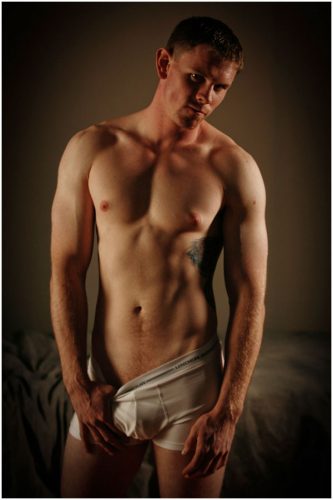 There was a time in the 50’s when young men arriving in Los Angles seeking fortune and fame in the film industry were recruited by photographers to be photographed nude or nearly nude for companies like Athletic Model Guild to showcase these young guy’s bodies in the hopes of hiring them for work. It seemed harmless at the time, and the photographs grew into such publications as the Physique Magazine that were adored by a complete male culture as a means of becoming healthy and strong. I recently watched a movie called Beefcake that documented the rise of fall of one particular photographer named Bob Mizer who was eventually brought down and indicted on a charge steaming from a prostitution sting. Looking back at his images they are spectacular, well conceived, well photographed images of beautiful fit young men in the prime of their lives. Many of them becoming classic works of art that have become highly collectable today, with prices ranging to $400 to $1000 plus for a standard 8×10. During that era the post office began to shut down such distribution of these images as being lewd and lascivious. Many of the photographers of this era’s images and negatives were confiscated by the courts and destroyed. Mizer went to elaborate lengths to refine and define this style of imagery that was by nature erotic and arousing for much of the culture and was yet socially acceptable by the general public at large. It became a cultural phenomenon to see near naked men exposed in such ways. This was of course before my time so I was never really exposed to such things. But I do member as a kid seeing the puny weakling on the beach having sand kicked to his face and wanting to become more masculine and strong and the beautiful Adonis you would become and who would be adored by everyone if you subscribed to this sort of ad. I am not even sure what the product was then. I had never really paid much attention to this sort of photography, but now I see the influence it has on my own work and style. Mizer was a man of vision who worshiped and paid such adoring homage to it. He opened his house to lost wayward boys, giving them a sense of dignity and respect. Paid them small sums for posing and gave them a place to stay. Many of them hustled on the side and took advantage of his generosity. But to look back, his artistic vision was astonishing and at the time may have felt or seemed worthless but inspired countless others to pursue the art of men naked. In the end he lost everything and become labeled as a pornographer, but for one fleeting time in our history defined a new adoration of oneself, with dignity and respect becoming a beacon and icon for others to follow. The film Beefcake by Thom Fitzgerald is a delightful film to watch unfold. It is filled with actual images and footage of this era and style, and yes contains lots of nudity mixed with live interviews from some of the models from that time and their perceptions of themselves and how they viewed culturally what was happening. I recently had ordered a book put together by Reed Massengill called Uncovered: Rare Vintage Male Nudes that pays homage to many of these artists, images lost but suddenly recovered. I have been looking at it with a new found adoration for those who have paved our way in this modern era.
There was a time in the 50’s when young men arriving in Los Angles seeking fortune and fame in the film industry were recruited by photographers to be photographed nude or nearly nude for companies like Athletic Model Guild to showcase these young guy’s bodies in the hopes of hiring them for work. It seemed harmless at the time, and the photographs grew into such publications as the Physique Magazine that were adored by a complete male culture as a means of becoming healthy and strong. I recently watched a movie called Beefcake that documented the rise of fall of one particular photographer named Bob Mizer who was eventually brought down and indicted on a charge steaming from a prostitution sting. Looking back at his images they are spectacular, well conceived, well photographed images of beautiful fit young men in the prime of their lives. Many of them becoming classic works of art that have become highly collectable today, with prices ranging to $400 to $1000 plus for a standard 8×10. During that era the post office began to shut down such distribution of these images as being lewd and lascivious. Many of the photographers of this era’s images and negatives were confiscated by the courts and destroyed. Mizer went to elaborate lengths to refine and define this style of imagery that was by nature erotic and arousing for much of the culture and was yet socially acceptable by the general public at large. It became a cultural phenomenon to see near naked men exposed in such ways. This was of course before my time so I was never really exposed to such things. But I do member as a kid seeing the puny weakling on the beach having sand kicked to his face and wanting to become more masculine and strong and the beautiful Adonis you would become and who would be adored by everyone if you subscribed to this sort of ad. I am not even sure what the product was then. I had never really paid much attention to this sort of photography, but now I see the influence it has on my own work and style. Mizer was a man of vision who worshiped and paid such adoring homage to it. He opened his house to lost wayward boys, giving them a sense of dignity and respect. Paid them small sums for posing and gave them a place to stay. Many of them hustled on the side and took advantage of his generosity. But to look back, his artistic vision was astonishing and at the time may have felt or seemed worthless but inspired countless others to pursue the art of men naked. In the end he lost everything and become labeled as a pornographer, but for one fleeting time in our history defined a new adoration of oneself, with dignity and respect becoming a beacon and icon for others to follow. The film Beefcake by Thom Fitzgerald is a delightful film to watch unfold. It is filled with actual images and footage of this era and style, and yes contains lots of nudity mixed with live interviews from some of the models from that time and their perceptions of themselves and how they viewed culturally what was happening. I recently had ordered a book put together by Reed Massengill called Uncovered: Rare Vintage Male Nudes that pays homage to many of these artists, images lost but suddenly recovered. I have been looking at it with a new found adoration for those who have paved our way in this modern era.